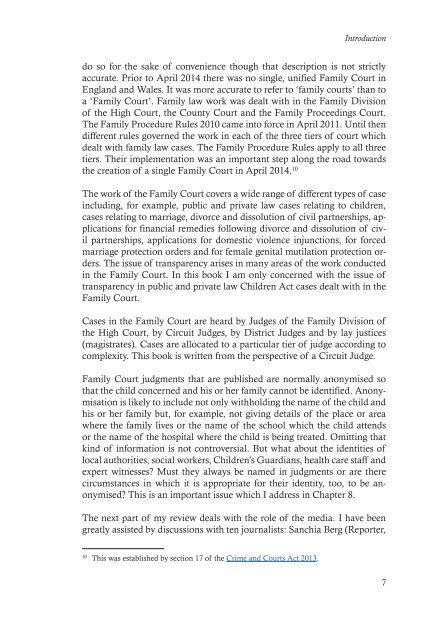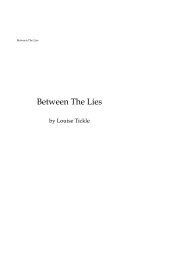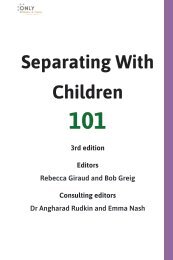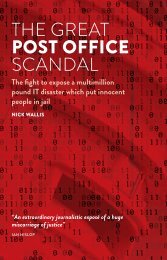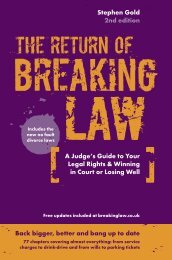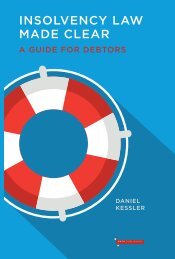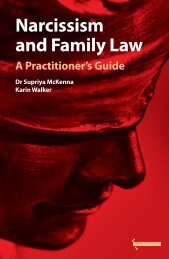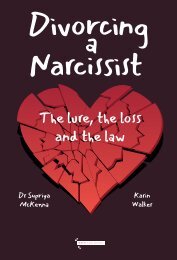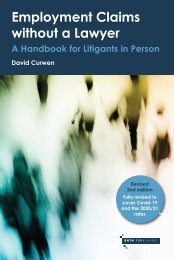The 'Secret' Family Court: Fact Or Fiction?
For approaching two decades, family courts have been accused of making life changing decisions about children and who they live with made in secret, away from the scrutiny of the public gaze. Recognising the force of these accusations, senior family courts judges have, over that time, implemented a raft of rule changes, pilot projects and judicial guidance aimed at making the family justice more accountable and transparent. But has any progress been made? Are there still suspicions that family judges make irrevocable, unaccountable decisions in private hearings? And if so, are those suspicions justified and what can be done to dispel them? In this important and timely new book, Clifford Bellamy, a recently retired family judge who has been at the sharp end of family justice during all these changes, attempts to answer those questions and more. He has spoken to leading journalists, judges and academic researchers to find out what the obstacles to open reporting are – be they legal, economic or cultural - and interweaves their insights with informed analysis on how the laws regulating family court reporting operate. Along the way he provides a comprehensive review of the raft of initiatives he has seen come and go, summarises the position now and uses this experience to suggest how this fundamental aspect of our justice system could adapt in the face of this criticism. Every professional working in the family justice system – lawyers, social workers, court staff and judges - as well as those who job it is to report on legal affairs, should read this informative, nuanced exposition of what open justice means and why it matters so much to those whose lives are upended by the family justice system.
For approaching two decades, family courts have been accused of making life changing decisions about children and who they live with made in secret, away from the scrutiny of the public gaze. Recognising the force of these accusations, senior family courts judges have, over that time, implemented a raft of rule changes, pilot projects and judicial guidance aimed at making the family justice more accountable and transparent.
But has any progress been made? Are there still suspicions that family judges make irrevocable, unaccountable decisions in private hearings? And if so, are those suspicions justified and what can be done to dispel them?
In this important and timely new book, Clifford Bellamy, a recently retired family judge who has been at the sharp end of family justice during all these changes, attempts to answer those questions and more. He has spoken to leading journalists, judges and academic researchers to find out what the obstacles to open reporting are – be they legal, economic or cultural - and interweaves their insights with informed analysis on how the laws regulating family court reporting operate. Along the way he provides a comprehensive review of the raft of initiatives he has seen come and go, summarises the position now and uses this experience to suggest how this fundamental aspect of our justice system could adapt in the face of this criticism.
Every professional working in the family justice system – lawyers, social workers, court staff and judges - as well as those who job it is to report on legal affairs, should read this informative, nuanced exposition of what open justice means and why it matters so much to those whose lives are upended by the family justice system.
You also want an ePaper? Increase the reach of your titles
YUMPU automatically turns print PDFs into web optimized ePapers that Google loves.
Introduction<br />
do so for the sake of convenience though that description is not strictly<br />
accurate. Prior to April 2014 there was no single, unified <strong>Family</strong> <strong>Court</strong> in<br />
England and Wales. It was more accurate to refer to ‘family courts’ than to<br />
a ‘<strong>Family</strong> <strong>Court</strong>’. <strong>Family</strong> law work was dealt with in the <strong>Family</strong> Division<br />
of the High <strong>Court</strong>, the County <strong>Court</strong> and the <strong>Family</strong> Proceedings <strong>Court</strong>.<br />
<strong>The</strong> <strong>Family</strong> Procedure Rules 2010 came into force in April 2011. Until then<br />
different rules governed the work in each of the three tiers of court which<br />
dealt with family law cases. <strong>The</strong> <strong>Family</strong> Procedure Rules apply to all three<br />
tiers. <strong>The</strong>ir implementation was an important step along the road towards<br />
the creation of a single <strong>Family</strong> <strong>Court</strong> in April 2014. 10<br />
<strong>The</strong> work of the <strong>Family</strong> <strong>Court</strong> covers a wide range of different types of case<br />
including, for example, public and private law cases relating to children,<br />
cases relating to marriage, divorce and dissolution of civil partnerships, applications<br />
for financial remedies following divorce and dissolution of civil<br />
partnerships, applications for domestic violence injunctions, for forced<br />
marriage protection orders and for female genital mutilation protection orders.<br />
<strong>The</strong> issue of transparency arises in many areas of the work conducted<br />
in the <strong>Family</strong> <strong>Court</strong>. In this book I am only concerned with the issue of<br />
transparency in public and private law Children Act cases dealt with in the<br />
<strong>Family</strong> <strong>Court</strong>.<br />
Cases in the <strong>Family</strong> <strong>Court</strong> are heard by Judges of the <strong>Family</strong> Division of<br />
the High <strong>Court</strong>, by Circuit Judges, by District Judges and by lay justices<br />
(magistrates). Cases are allocated to a particular tier of judge according to<br />
complexity. This book is written from the perspective of a Circuit Judge.<br />
<strong>Family</strong> <strong>Court</strong> judgments that are published are normally anonymised so<br />
that the child concerned and his or her family cannot be identified. Anonymisation<br />
is likely to include not only withholding the name of the child and<br />
his or her family but, for example, not giving details of the place or area<br />
where the family lives or the name of the school which the child attends<br />
or the name of the hospital where the child is being treated. Omitting that<br />
kind of information is not controversial. But what about the identities of<br />
local authorities, social workers, Children’s Guardians, health care staff and<br />
expert witnesses? Must they always be named in judgments or are there<br />
circumstances in which it is appropriate for their identity, too, to be anonymised?<br />
This is an important issue which I address in Chapter 8.<br />
<strong>The</strong> next part of my review deals with the role of the media. I have been<br />
greatly assisted by discussions with ten journalists: Sanchia Berg (Reporter,<br />
10<br />
This was established by section 17 of the Crime and <strong>Court</strong>s Act 2013.<br />
7


